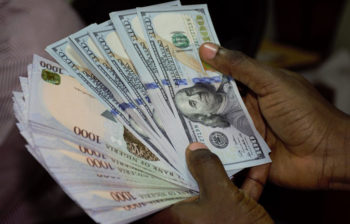
Nigeria’s external debt stock rose by 29 percent, according to a report published by the World Bank.
The International Debt Statistics 2019, which was released early this month, is the World Bank’s compilation of statistics covering external debt and financial flows of 121 low and middle-income countries in the world.
It said, “In 2017, countries in Sub-Saharan Africa accumulated external debt at a faster pace than low and middle income countries in other regions. The combined external debt for Sub-Saharan Africa rose by 15.5 percent to $535 billion.
“This increase was driven by a sudden rise in borrowing by Africa’s two largest economies – Nigeria and South Africa. External debt for both countries rose by 29 percent and 21 percent respectively while for other Sub-Saharan countries, it rose by an average of 11 percent.”
International financial flows, comprising debt and equity, to low- and middle-income countries is said to have exceeded $1.1 trillion in 2017, a 61 percent increase from 2016.
Economic growth in Sub-Saharan Africa is said to have been eroded by this rise in external debt stocks. While the Gross National Income (GNI) of Sub-Saharan African countries (in US dollars) rose on an average of 23 percent between 2010 and 2017, its combined external debt stock is said to have risen far higher, by 90 percent over the same period.
“The ratio of external debt-to-GNI for the region averaged 34.2 percent at the end of 2017, up moderately from 2016’s average of 32 percent. However, that was over 50 percent higher than in 2010.
“The fastest growing component of external debt was short-term debt, with an increase of 19 percent while long-term debt rose by 7 percent. At the end of 2017, short-term debt made up 26 percent of external debt stocks, a slight increase from 2016.
“China was the main driver behind the rise in short-term external debt. It accounted for nearly one quarter of the combined external debt stock of low and middle income countries at the end of 2017,” the report said.
It added that by contrast, net inflows from official creditors, including the International Monetary Fund (IMF), fell 20 percent to $52 billion. Net inflows from the World Bank (International Bank for Reconstruction and Development (IBRD) and International Development Association (IDA) combined) reportedly went down by 6 percent from 2016. Inflows from regional development banks were also said to have fallen by 30 percent to $13 billion, their lowest level since 2013.
Accounting for one quarter of external loan commitments in 2017 to low and middle income countries excluding Bangladesh, and 22 percent including Bangladesh, the IDA is said to remain the largest creditor of IDA-only countries.
“The external debt of IDA-only countries is concentrated in a few countries. Of the 59 IDA-only countries, 12 accounted for 65 percent of external debt stock at the end of 2017.
“Bangladesh emerged the largest IDA-only borrower with an external debt stock of $47.2 billion at end 2017, followed by Ethiopia ($26 billion), Ghana ($22 billion) and Sudan, $21.7 billion.
“Borrowing patterns also varied, as evidenced by the composition of end 2017 external debt stocks. Bangladesh, Ethiopia, Mozambique and Myanmar owed over 70 percent of their debt to official creditors while other countries owed substantial portions to private creditors: Zambia (64 percent), Cote d’Ivoire and the Lao People’s Democratic Republic (49 percent respectively) and Nicaragua (45 percent). While around 10 percent of end-2017 external debt stocks among IDA-only countries was short-term, that level was twice as high in Bangladesh and Sudan,” the report said.
